File Info
| Exam | ServiceNow Certified Technical Architect |
| Number | CTA |
| File Name | ServiceNow.CTA.VCEplus.2025-02-16.23q.tqb |
| Size | 107 KB |
| Posted | Feb 16, 2025 |
| Download | ServiceNow.CTA.VCEplus.2025-02-16.23q.tqb |
How to open VCEX & EXAM Files?
Files with VCEX & EXAM extensions can be opened by ProfExam Simulator.
Coupon: MASTEREXAM
With discount: 20%
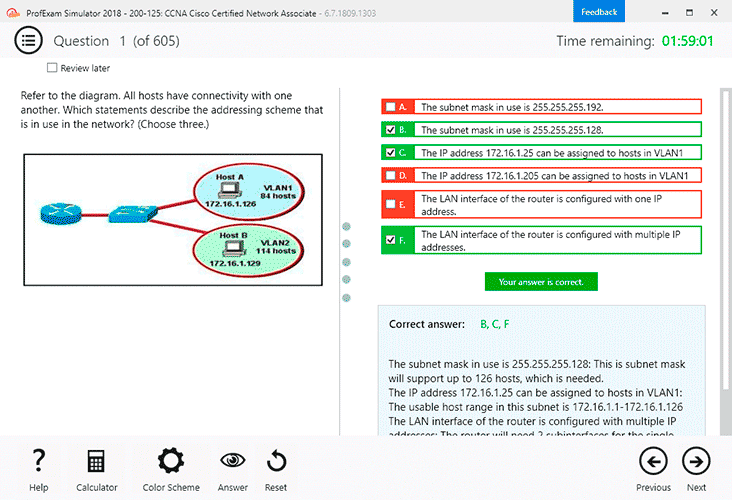
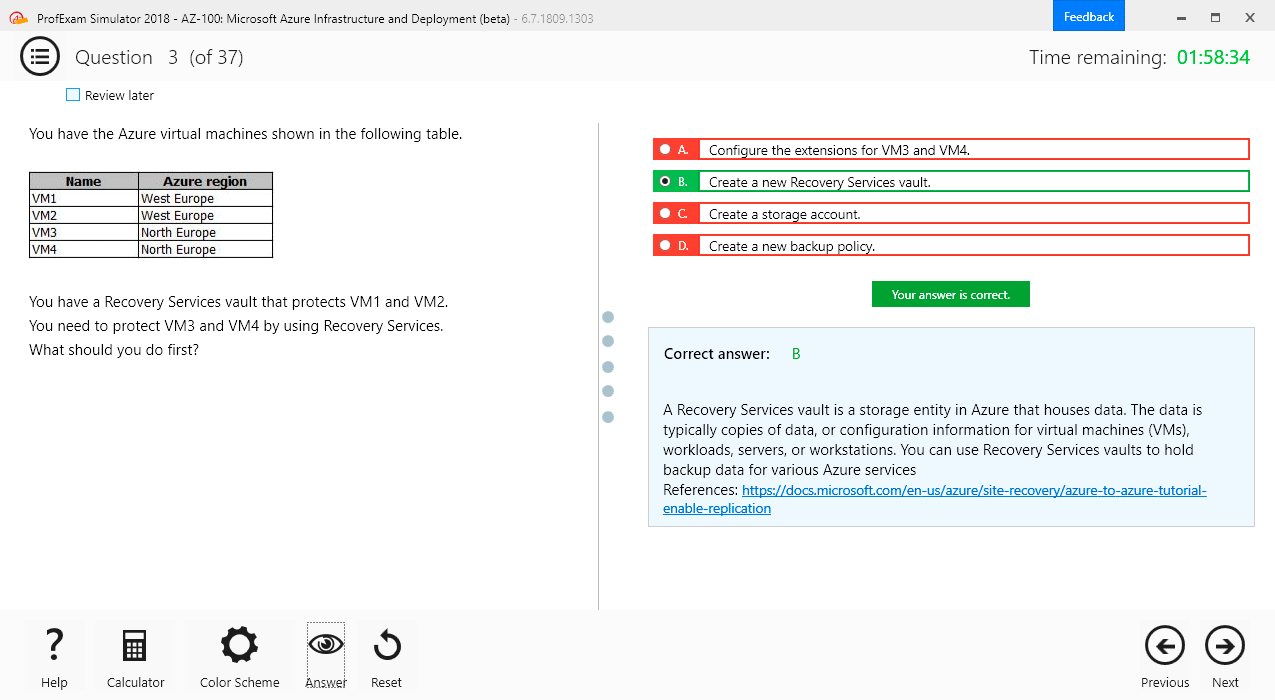
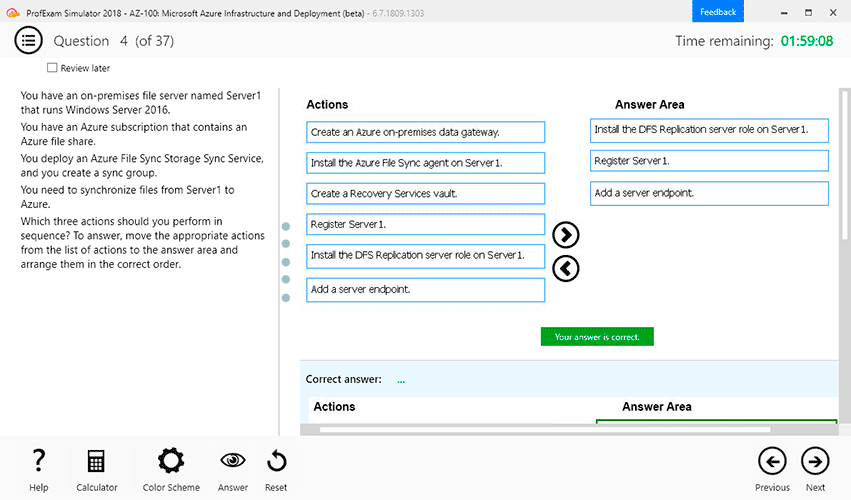
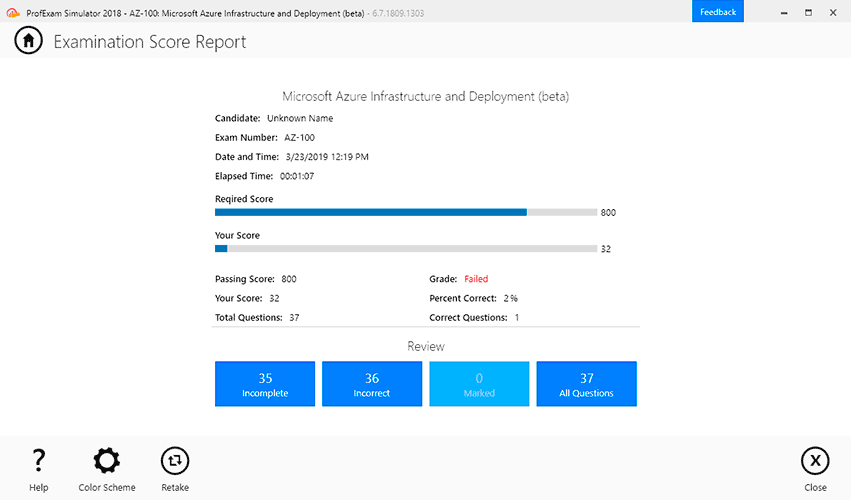
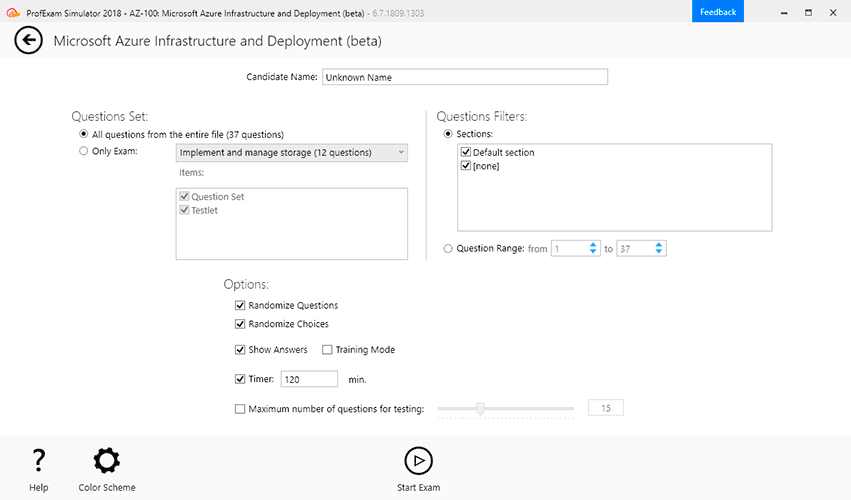

Demo Questions
Question 1
What are the primary capabilities of Service Mapping in ServiceNow?
Choose 2 answers
- Create a service-centric Configuration Management Database (CMDB)
- Enhance cybersecurity measures across systems
- Automate routine IT infrastructure updates
- Oversee software licensing for various platforms
- Establish links between IT infrastructure components and application services
Correct answer: AE
Explanation:
Service Mapping in ServiceNow has two primary capabilities:A . Create a service-centric Configuration Management Database (CMDB): Service Mapping helps shift the focus of the CMDB from individual components to a service-centric view. It achieves this by mapping the relationships between infrastructure components and the services they support, providing a clear understanding of how IT supports business services.E . Establish links between IT infrastructure components and application services: This is the core function of Service Mapping. It automatically discovers and maps the dependencies between applications, infrastructure (servers, databases, network devices), and the services they deliver. This creates a visual representation of the IT landscape and how it supports business services. Why not the other options?B: While Service Mapping can indirectly contribute to cybersecurity by providing visibility into the IT environment, enhancing cybersecurity measures is not its primary function.C: Automating routine IT infrastructure updates is typically handled by other ServiceNow capabilities like Orchestration, not Service Mapping.D: Software licensing management is usually handled by Software Asset Management tools, not Service Mapping. Service Mapping in ServiceNow has two primary capabilities:
A . Create a service-centric Configuration Management Database (CMDB): Service Mapping helps shift the focus of the CMDB from individual components to a service-centric view. It achieves this by mapping the relationships between infrastructure components and the services they support, providing a clear understanding of how IT supports business services.
E . Establish links between IT infrastructure components and application services: This is the core function of Service Mapping. It automatically discovers and maps the dependencies between applications, infrastructure (servers, databases, network devices), and the services they deliver. This creates a visual representation of the IT landscape and how it supports business services.
Why not the other options?
B: While Service Mapping can indirectly contribute to cybersecurity by providing visibility into the IT environment, enhancing cybersecurity measures is not its primary function.
C: Automating routine IT infrastructure updates is typically handled by other ServiceNow capabilities like Orchestration, not Service Mapping.
D: Software licensing management is usually handled by Software Asset Management tools, not Service Mapping.
Question 2
What does a ServiceNow governance framework typically define?
Choose 3 answers
- How decisions are made
- What decisions need to be made
- Who is involved in decision-making
- Recurring schedules for governance meetings
- How work gets done on the platform
Correct answer: ABC
Explanation:
A ServiceNow governance framework provides structure and guidance for managing the platform and its applications. It typically defines:A . How decisions are made: The framework outlines the processes for making decisions related to the platform, such as changes to configurations, new application development, and platform upgrades. This might include approval processes, escalation procedures, and communication protocols.B . What decisions need to be made: The framework identifies the types of decisions that require governance oversight. This might include decisions about platform strategy, architecture, security, data management, and integration with other systems.C . Who is involved in decision-making: The framework establishes roles and responsibilities for different stakeholders in the governance process. This might include defining a governance board, steering committees, and individual roles with specific decision-making authority.Why not the other options?D: While recurring schedules for governance meetings are important, they are not a defining element of the governance framework itself. The framework focuses on the overall structure and processes for decision-making.E: How work gets done on the platform is more related to process definitions and workflows within specific applications, not the overarching governance framework. A ServiceNow governance framework provides structure and guidance for managing the platform and its applications. It typically defines:
A . How decisions are made: The framework outlines the processes for making decisions related to the platform, such as changes to configurations, new application development, and platform upgrades. This might include approval processes, escalation procedures, and communication protocols.
B . What decisions need to be made: The framework identifies the types of decisions that require governance oversight. This might include decisions about platform strategy, architecture, security, data management, and integration with other systems.
C . Who is involved in decision-making: The framework establishes roles and responsibilities for different stakeholders in the governance process. This might include defining a governance board, steering committees, and individual roles with specific decision-making authority.
Why not the other options?
D: While recurring schedules for governance meetings are important, they are not a defining element of the governance framework itself. The framework focuses on the overall structure and processes for decision-making.
E: How work gets done on the platform is more related to process definitions and workflows within specific applications, not the overarching governance framework.
Question 3
A new project request requires quick implementation but involves portfolio realignment. As an IT leader, who should you consult to prioritize this demand?
- Demand Board
- Executive Steering Board
- Program Steering Committee
- Technical Governance Board
Correct answer: B
Explanation:
In this scenario, the Executive Steering Board is the most appropriate group to consult. Here's why:Portfolio Realignment: This implies significant changes to the overall IT portfolio, which falls under the purview of the Executive Steering Board. They have the authority to make strategic decisions about the IT portfolio and prioritize initiatives based on business goals and overall impact.Why not the other options?A . Demand Board: The Demand Board typically focuses on evaluating and prioritizing individual demands or requests, but they may not have the authority to make decisions about portfolio realignment.C . Program Steering Committee: This committee focuses on the governance and oversight of specific programs, not on overall portfolio strategy.D . Technical Governance Board: This board focuses on technical standards, architecture, and security, not on strategic portfolio decisions. In this scenario, the Executive Steering Board is the most appropriate group to consult. Here's why:
Portfolio Realignment: This implies significant changes to the overall IT portfolio, which falls under the purview of the Executive Steering Board. They have the authority to make strategic decisions about the IT portfolio and prioritize initiatives based on business goals and overall impact.
Why not the other options?
A . Demand Board: The Demand Board typically focuses on evaluating and prioritizing individual demands or requests, but they may not have the authority to make decisions about portfolio realignment.
C . Program Steering Committee: This committee focuses on the governance and oversight of specific programs, not on overall portfolio strategy.
D . Technical Governance Board: This board focuses on technical standards, architecture, and security, not on strategic portfolio decisions.
Question 4
Under technical governance policies, what does environmental management in ServiceNow primarily define?
- Instance structure
- Data ownership
- User access policies
- Application customization
Correct answer: A
Explanation:
In the context of ServiceNow technical governance, environmental management primarily focuses on defining the instance structure. This includes:Instance Segmentation: Determining how many instances are needed (e.g., separate instances for development, test, and production) and how they relate to each other.Instance Upgrades: Establishing policies and procedures for managing instance upgrades, including scheduling, testing, and communication.Instance Maintenance: Defining guidelines for ongoing maintenance activities, such as patching, backups, and performance monitoring.Why not the other options?B . Data ownership: Data ownership is typically addressed within data governance policies, not specifically environmental management.C . User access policies: User access policies are part of security governance and are handled through roles, permissions, and access control lists.D . Application customization: Application customization is governed by development and configuration standards, not directly by environmental management. In the context of ServiceNow technical governance, environmental management primarily focuses on defining the instance structure. This includes:
Instance Segmentation: Determining how many instances are needed (e.g., separate instances for development, test, and production) and how they relate to each other.
Instance Upgrades: Establishing policies and procedures for managing instance upgrades, including scheduling, testing, and communication.
Instance Maintenance: Defining guidelines for ongoing maintenance activities, such as patching, backups, and performance monitoring.
Why not the other options?
B . Data ownership: Data ownership is typically addressed within data governance policies, not specifically environmental management.
C . User access policies: User access policies are part of security governance and are handled through roles, permissions, and access control lists.
D . Application customization: Application customization is governed by development and configuration standards, not directly by environmental management.
Question 5
A company is preparing for a ServiceNow instance upgrade. Which tool shortens the time to validate critical processes post-upgrade?
- Test Management 2.0
- Automated Testing Framework (ATF)
- Manual testing scripts
- System health dashboard
Correct answer: B
Explanation:
The Automated Testing Framework (ATF) is the best tool for quickly validating critical processes after a ServiceNow instance upgrade. Here's why:Automated Execution: ATF allows you to create automated tests that can be run quickly and repeatedly after the upgrade. This significantly reduces the time required for testing compared to manual methods.Comprehensive Coverage: You can create automated tests for various processes, workflows, UI actions, and business rules, ensuring comprehensive validation of critical functionality.Regression Testing: ATF is particularly valuable for regression testing, ensuring that the upgrade hasn't introduced any unexpected issues or broken existing functionality.Why not the other options?A . Test Management 2.0: While Test Management 2.0 provides a framework for managing tests, it doesn't inherently shorten the testing time itself. It can be used with ATF to organize and track automated tests.C . Manual testing scripts: Manual testing is time-consuming and prone to errors, especially for repetitive tasks involved in upgrade validation.D . System health dashboard: This dashboard provides an overview of system performance and health, but it doesn't directly validate specific processes or workflows. The Automated Testing Framework (ATF) is the best tool for quickly validating critical processes after a ServiceNow instance upgrade. Here's why:
Automated Execution: ATF allows you to create automated tests that can be run quickly and repeatedly after the upgrade. This significantly reduces the time required for testing compared to manual methods.
Comprehensive Coverage: You can create automated tests for various processes, workflows, UI actions, and business rules, ensuring comprehensive validation of critical functionality.
Regression Testing: ATF is particularly valuable for regression testing, ensuring that the upgrade hasn't introduced any unexpected issues or broken existing functionality.
Why not the other options?
A . Test Management 2.0: While Test Management 2.0 provides a framework for managing tests, it doesn't inherently shorten the testing time itself. It can be used with ATF to organize and track automated tests.
C . Manual testing scripts: Manual testing is time-consuming and prone to errors, especially for repetitive tasks involved in upgrade validation.
D . System health dashboard: This dashboard provides an overview of system performance and health, but it doesn't directly validate specific processes or workflows.
Question 6
What is the primary purpose of the Test Management 2.0 application in ServiceNow?
- To streamline manual testing processes
- To generate test cases automatically
- To automate software testing processes
- To replace human testers with AI
Correct answer: A
Explanation:
The primary purpose of Test Management 2.0 is to streamline manual testing processes. It provides a structured framework for:Planning and Designing Tests: Creating test plans, test cases, and test suites.Executing Tests: Tracking test execution and recording results.Managing Defects: Logging and tracking defects found during testing.Reporting: Generating reports on test coverage, progress, and results.Why not the other options?B . To generate test cases automatically: While Test Management 2.0 can help with test case design, it doesn't automatically generate them.C . To automate software testing processes: This is the role of the Automated Testing Framework (ATF). Test Management 2.0 can be used alongside ATF to manage automated tests.D . To replace human testers with AI: While AI can assist with testing, Test Management 2.0 is primarily designed to support human testers, not replace them. The primary purpose of Test Management 2.0 is to streamline manual testing processes. It provides a structured framework for:
Planning and Designing Tests: Creating test plans, test cases, and test suites.
Executing Tests: Tracking test execution and recording results.
Managing Defects: Logging and tracking defects found during testing.
Reporting: Generating reports on test coverage, progress, and results.
Why not the other options?
B . To generate test cases automatically: While Test Management 2.0 can help with test case design, it doesn't automatically generate them.
C . To automate software testing processes: This is the role of the Automated Testing Framework (ATF). Test Management 2.0 can be used alongside ATF to manage automated tests.
D . To replace human testers with AI: While AI can assist with testing, Test Management 2.0 is primarily designed to support human testers, not replace them.
Question 7
What type of testing is characterized by an unplanned approach where the tester's understanding and insight are the most important factors?
- Usability testing
- Performance testing
- Ad hoc testing
- Load testing
Correct answer: C
Explanation:
Ad hoc testing is characterized by an unplanned, informal approach where testers rely on their knowledge and intuition to explore the software and identify potential issues.Key characteristics of ad hoc testing:No predefined test cases: Testers don't follow specific scripts or steps.Exploratory in nature: Testers freely explore the software, trying different actions and inputs.Relies on tester experience: The effectiveness of ad hoc testing depends on the tester's understanding of the software and their ability to identify potential problem areas.Why not the other options?A . Usability testing: Focuses on user experience and follows a structured approach.B . Performance testing: Evaluates system performance under different conditions (e.g., load, stress).D . Load testing: A type of performance testing that simulates heavy user load. Ad hoc testing is characterized by an unplanned, informal approach where testers rely on their knowledge and intuition to explore the software and identify potential issues.
Key characteristics of ad hoc testing:
No predefined test cases: Testers don't follow specific scripts or steps.
Exploratory in nature: Testers freely explore the software, trying different actions and inputs.
Relies on tester experience: The effectiveness of ad hoc testing depends on the tester's understanding of the software and their ability to identify potential problem areas.
Why not the other options?
A . Usability testing: Focuses on user experience and follows a structured approach.
B . Performance testing: Evaluates system performance under different conditions (e.g., load, stress).
D . Load testing: A type of performance testing that simulates heavy user load.
Question 8
What is the primary purpose of having a go-live plan?
- To facilitate a seamless and smooth transition process.
- To record root causes for problems arising out of the transition.
- To establish a backup system for data recovery.
- To conduct a comprehensive review of all project documents.
Correct answer: A
Explanation:
The primary purpose of a go-live plan is to facilitate a seamless and smooth transition process when deploying new software or changes to a production environment. It acts as a roadmap for the go-live event, outlining the steps involved, roles and responsibilities, and timelines.A go-live plan typically includes: Pre-Go-Live Activities: Data migration, system checks, communication to users.Go-Live Activities: Deployment steps, rollback procedures, monitoring.Post-Go-Live Activities: Support procedures, user training, issue resolution.Why not the other options?B . To record root causes for problems arising out of the transition: While problem resolution is important, it's not the primary purpose of the go-live plan.C . To establish a backup system for data recovery: Backups are essential, but they are a separate consideration from the go-live plan.D . To conduct a comprehensive review of all project documents: This review should happen earlier in the project lifecycle. The primary purpose of a go-live plan is to facilitate a seamless and smooth transition process when deploying new software or changes to a production environment. It acts as a roadmap for the go-live event, outlining the steps involved, roles and responsibilities, and timelines.
A go-live plan typically includes:
Pre-Go-Live Activities: Data migration, system checks, communication to users.
Go-Live Activities: Deployment steps, rollback procedures, monitoring.
Post-Go-Live Activities: Support procedures, user training, issue resolution.
Why not the other options?
B . To record root causes for problems arising out of the transition: While problem resolution is important, it's not the primary purpose of the go-live plan.
C . To establish a backup system for data recovery: Backups are essential, but they are a separate consideration from the go-live plan.
D . To conduct a comprehensive review of all project documents: This review should happen earlier in the project lifecycle.
Question 9
Why is IP address access control considered part of the network layer despite being implemented in the application layer?
- It performs data tokenization and substitution for security.
- It uses encryption to protect data at rest in the ServiceNow instance.
- It restricts access to the instance based on IP address ranges.
- It manages user authentication to the ServiceNow platform.
Correct answer: C
Explanation:
IP address access control is considered part of the network layer because it restricts access to the instance based on IP address ranges.Here's why:Network Layer Functionality: IP address filtering operates at the network level by controlling which IP addresses are allowed to connect to the ServiceNow instance. This is similar to firewall rules that control network traffic.Application Layer Implementation: While the filtering might be implemented within the ServiceNow application (application layer), the underlying functionality is related to network access control.Why not the other options?A . It performs data tokenization and substitution for security: This is a data security technique, not related to network layer access control.B . It uses encryption to protect data at rest in the ServiceNow instance: This is a data security measure, not network access control.D . It manages user authentication to the ServiceNow platform: Authentication is a separate security layer (usually application layer) that verifies user identities. IP address access control is considered part of the network layer because it restricts access to the instance based on IP address ranges.
Here's why:
Network Layer Functionality: IP address filtering operates at the network level by controlling which IP addresses are allowed to connect to the ServiceNow instance. This is similar to firewall rules that control network traffic.
Application Layer Implementation: While the filtering might be implemented within the ServiceNow application (application layer), the underlying functionality is related to network access control.
Why not the other options?
A . It performs data tokenization and substitution for security: This is a data security technique, not related to network layer access control.
B . It uses encryption to protect data at rest in the ServiceNow instance: This is a data security measure, not network access control.
D . It manages user authentication to the ServiceNow platform: Authentication is a separate security layer (usually application layer) that verifies user identities.
Question 10
What components constitute the application layer security within ServiceNow?
Choose 3 answers
- Multi-Factor Authentication (MFA)
- Platform Encryption (PE)
- Access Control Lists (ACLs)
- Full Disk Encryption (FDE)
- IP address access control
Correct answer: ACE
Explanation:
Application layer security in ServiceNow focuses on protecting data and functionality within the ServiceNow application itself. The following components contribute to this:A . Multi-Factor Authentication (MFA): MFA adds an extra layer of security by requiring users to provide multiple forms of authentication (e.g., password, security token, biometric verification) to access the application.C . Access Control Lists (ACLs): ACLs define which users or roles have permission to access, modify, or delete specific data and functionality within the application.E . IP address access control: While technically a network layer control, IP address access control is often implemented and managed within the ServiceNow application. It restricts access to the instance based on IP address ranges.Why not the other options?B . Platform Encryption (PE): This is a broader encryption solution that protects data at rest across the platform, not specifically at the application layer.D . Full Disk Encryption (FDE): This encrypts the entire hard drive of the server where the ServiceNow instance is hosted, providing protection at the infrastructure level, not the application layer. Application layer security in ServiceNow focuses on protecting data and functionality within the ServiceNow application itself. The following components contribute to this:
A . Multi-Factor Authentication (MFA): MFA adds an extra layer of security by requiring users to provide multiple forms of authentication (e.g., password, security token, biometric verification) to access the application.
C . Access Control Lists (ACLs): ACLs define which users or roles have permission to access, modify, or delete specific data and functionality within the application.
E . IP address access control: While technically a network layer control, IP address access control is often implemented and managed within the ServiceNow application. It restricts access to the instance based on IP address ranges.
Why not the other options?
B . Platform Encryption (PE): This is a broader encryption solution that protects data at rest across the platform, not specifically at the application layer.
D . Full Disk Encryption (FDE): This encrypts the entire hard drive of the server where the ServiceNow instance is hosted, providing protection at the infrastructure level, not the application layer.

